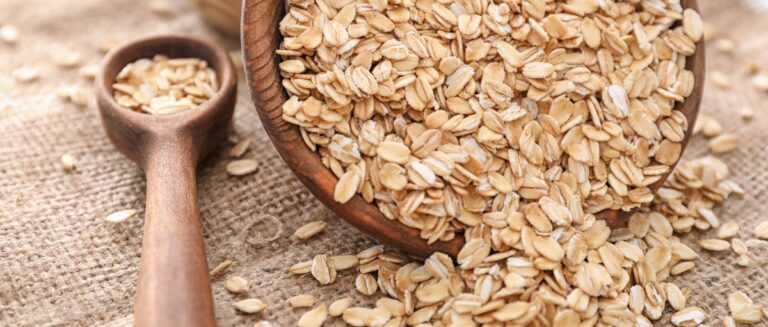As a parent or grandparent, it can feel like your little girl is growing up in the blink of an eye. One day, she’s learning to walk, and the next, she’s picking out her first bra. Watching a girl grow is a sentimental experience. With each milestone captured on growth charts, it’s natural to wonder: When do women stop growing?
The short answer is that most girls reach their full adult height around age 14 or 15, about two to two-and-a-half years after starting their first period. However, the journey to this milestone is different for every girl.
The average age for a first period is 12. Some girls start puberty as early as 8, while others may not begin until 13. The growth spurts accompanying puberty can also start and stop at different times.
In this article, we’ll explain the typical timeline for growth and puberty in women, when they start and stop growing, including key milestones like breast development and first periods. We’ll also discuss the various genetic and environmental factors that influence how and when girls grow. Finally, we’ll share some common signs that your girl has reached her adult height and provide guidance on when to check with a doctor if you have concerns.
Whether your daughter is an early or late bloomer, this guide will help you support her through each stage of her growth and development. So, let’s get started with a closer look at the fascinating science behind growing girls.
When Do Women Stop Getting Taller?
For most women, growth starts to slow down around age 14 or 15, with little to no growth occurring after this point. This ending of the growth phase typically occurs about two to two-and-a-half years after a girl’s first period.
During puberty, girls go through a rapid growth spurt, with the fastest rate of growth happening in the year before their first period. Once menstruation starts, growth begins to taper off in women until they stop growing as they approach their full adult height. After menarche, most girls grow another 2-3 inches at most.
These are the key points to remember:
- Girls usually reach their adult height around the age of 14-15.
- Growth slows and stops 2-2.5 years after the first period.
- The fastest growth occurs right before the first period, with slower growth in the 1-2 years after.
While these are general guidelines, every girl’s growth timeline is unique. The exact age at which women stop growing depends on various individual factors, including genetics and the timing of puberty milestones.
When Do Women Stop Growing? Puberty Stages and Growth Timeline
Puberty is the process of physical changes that occur as women mature into adults by which they stop growing. It typically begins between 8 and 13, though some girls may start earlier or later. During this time, girls experience a rapid growth spurt and other developmental milestones.
Breast Development
One of the first signs of puberty is breast development, which can start as early as age 8 or 9. As breasts begin to bud and grow, girls may notice tenderness or unevenness, which is entirely normal. Breast development continues throughout puberty and may not be complete until several years after the first period.
Growth Spurt
Girls usually experience their fastest growth rate in the year leading up to their first period, known as the pubertal growth spurt. During this time, they may grow as much as 3 inches in height per year and gain 20-30 pounds. This rapid growth typically starts around age ten and peaks at age 12 before tapering off.
First Period (Menarche)
The onset of menstruation, or menarche, is a significant milestone in puberty. It typically occurs around age 12, though the normal range is between 9 and 15. After the first period, growth slows considerably, with most girls only growing an additional 1-2 inches.
Growth Patterns Before and After First Period
Before menarche, girls experience rapid growth as their bodies prepare for sexual maturation. Breasts develop, hips widen, and body fat increases. After the first period, growth velocity decreases sharply. While she may grow slightly more, it is usually minimal compared to the pre-menarche growth spurt.
On average, girls grow about 10 inches, though individual numbers vary. By the end of puberty, most women stop growing and reach their full adult height, though some may continue to grow slightly into their late teens.
Understanding the typical timeline of puberty in girls and its associated growth patterns can help parents and caregivers know what to expect as their daughters mature. However, it’s important to remember that every girl develops at her own pace, and variations are normal. In the next section, we’ll explore some factors that can influence the timing and progression of puberty and growth.
Factors That Influence Growth and Puberty
While the general puberty timeline is similar for most girls, several factors can influence the exact timing and progression of development. Understanding these factors can help explain why some girls may develop earlier or later than their peers.
Genetics and Family History
Genetics play a significant role in determining when a girl starts puberty and how quickly she grows. Girls often follow a similar growth pattern to their mothers, with factors like age at first period tending to run in families. However, individual genetic variations mean that even sisters may have different timelines.
Nutrition and Body Composition
Proper nutrition is essential for healthy growth and development. Girls who are underweight or malnourished may experience delayed puberty, while those who are overweight may start puberty earlier. Studies have also shown that girls with higher body fat percentages tend to have earlier periods.
Health Conditions
Certain health conditions can affect the timing and progression of puberty. Hormonal disorders, such as precocious puberty or growth hormone deficiency, can cause development to start too early or too late. Chronic illnesses, such as celiac disease, cystic fibrosis, or cancer, can also delay puberty or slow growth.
Environmental Factors
Environmental factors such as stress, exposure to toxins, and socioeconomic status have also been linked to variations in puberty timing. For example, girls who experience significant stress or trauma may have delayed development, while those exposed to endocrine-disrupting chemicals may start puberty earlier.
While these factors can influence the onset and progression of puberty, it’s important to remember to expect a wide range of developmental timelines. If you have concerns about your daughter’s growth or puberty, don’t hesitate to ask her pediatrician for personalized guidance.
What Age Do Women Stop Growing Taller? Signs They’ve Reached Adult Height
With all the individual variations in growth and development, it can be challenging to know when a woman has reached her final adult height and stopped growing. However, several common signs indicate that women are about to stop growing:
- Slowed growth: If your daughter has grown less than 2 inches in the past year, she is likely nearing the end of her growth phase.
- Average height: Most girls reach an adult height within the average range for women, between 5’1″ and 5’7″. If your daughter is in this range and has had minimal growth recently, she may be at her final height.
- Menstruation: The onset of menstruation is a critical sign that growth is slowing down. If your daughter has had her period for 2-3 years and it has become regular, she is likely close to her adult height.
- Body proportions: As girls reach their final height, their body proportions often even out. They may lose the adolescent “gangly” look and appear more proportionate, with hips and breasts close to their adult size.
Remember that even after the significant growth phase has ended, some girls may continue to grow slightly into their late teens. Poor nutrition, chronic illness, or other health issues could cause delayed development. If you have any concerns, consult with your daughter’s doctor.
Celebrating Your Daughter’s Growth Journey
Watching your little girl grow into a young woman can be exciting and bittersweet. The journey from childhood through puberty into adulthood is a time of significant physical, emotional, and social changes.
As a parent or grandparent, your support and guidance can significantly affect how your daughter navigates this transition. Remember that every girl’s path is unique, and there is a wide range of normal when it comes to growth and development.
If your daughter seems to develop earlier or later than her peers, try not to worry. Instead, focus on providing a healthy lifestyle, open communication, and unconditional love. If you have concerns, don’t hesitate to talk to your daughter’s pediatrician for reassurance and advice.
Above all, celebrate your daughter’s milestones and support her as she grows into the unique adult she will become. With your guidance and understanding, she will blossom in her own beautiful way, on her own perfect timeline.
Sources
KidsHealth on Growth in Teens: KidsHealth. (2023, April). Growth and your 13- to 18-year-old. KidsHealth. https://kidshealth.org/en/parents/growth-13-to-18.html
NCBI Book on Child Development: Rafferty, J. F. (2018). Normal growth and development. In StatPearls. StatPearls Publishing. https://www.ncbi.nlm.nih.gov/books/NBK470216/
Johns Hopkins Medicine on Growth Spurts: Johns Hopkins Medicine. (n.d.). What is a growth spurt during puberty? Johns Hopkins Medicine. https://www.hopkinsmedicine.org/health/wellness-and-prevention/what-is-a-growth-spurt-during-puberty
KidsHealth on Puberty: KidsHealth. (2023, April). Understanding puberty. KidsHealth. https://kidshealth.org/en/parents/understanding-puberty.html
HealthyChildren on Physical Development in Girls: American Academy of Pediatrics. (2015, November 21). Physical development in girls: What to expect. HealthyChildren.org. https://www.healthychildren.org/English/ages-stages/gradeschool/puberty/Pages/Physical-Development-Girls-What-to-Expect.aspx
JAMA Pediatrics Article on Puberty: Biro, F. M., & Dorn, L. D. (2005). Puberty and adolescent sexuality. JAMA Pediatrics, 159(10), 918-919. https://doi.org/10.1001/archpedi.159.10.918
NCBI PMC Article on Growth and Development: Rogol, A. D., Roemmich, J. N., & Clark, P. A. (2022). Growth and pubertal development in children and adolescents: Effects of diet and physical activity. American Journal of Clinical Nutrition, 115(3), 553-561. https://doi.org/10.1093/ajcn/nqac027
NCBI PMC Article on Pubertal Development in Adolescents: Dalla, V. B., & Siegel, S. R. (2021). Pubertal development in adolescents: A complex interaction of hormones, genes, and environment. Hormone Research in Paediatrics, 95(5-6), 251-259. https://doi.org/10.1159/000515456
ScienceDirect Article on Puberty: Perry, R. J., & Adan, L. (2019). Pubertal timing and its relationship to adolescent growth and development. Current Opinion in Endocrinology, Diabetes and Obesity, 26(5), 323-328. https://doi.org/10.1016/j.eclo.2019.06.005











